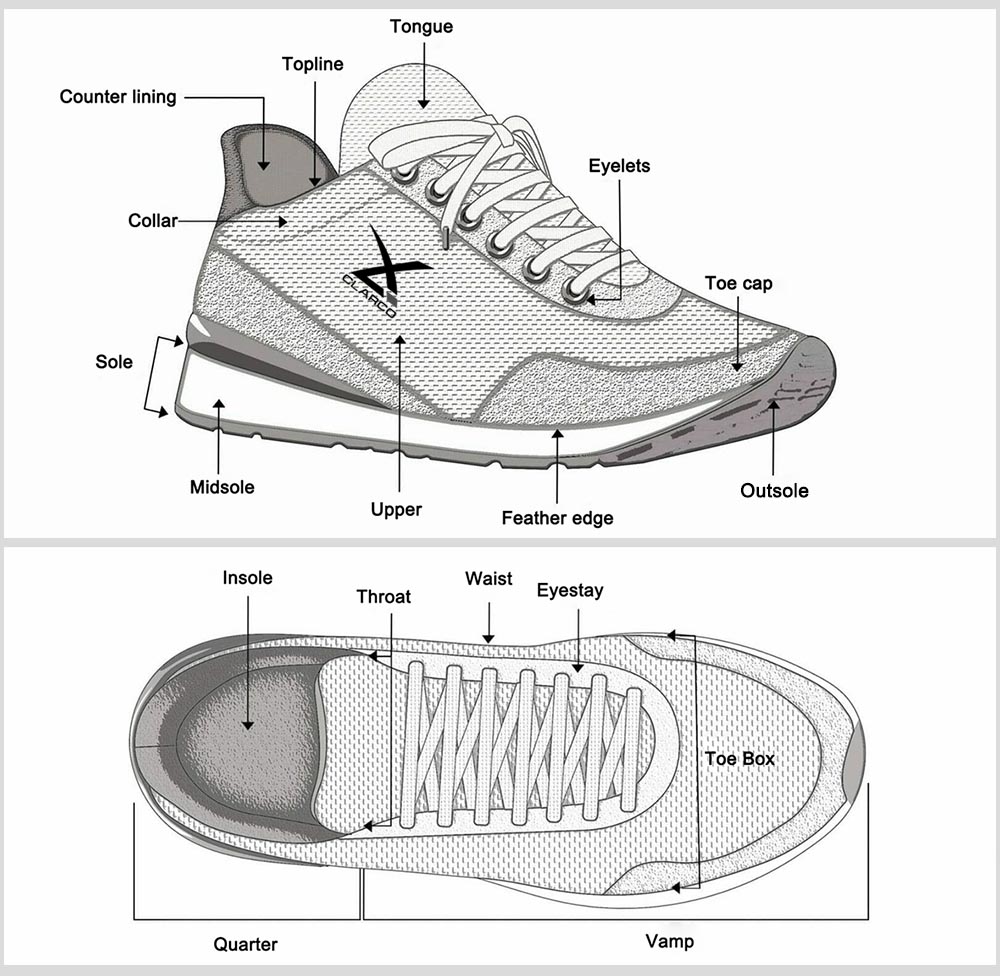Summary: For some people new to the word: sneaker, the first question that probably comes to mind is: What is a sneaker? You might be familiar with shoes, but what exactly are sneakers? In this all-in-one post, we’ll discuss everything you need to know about: sneaker history, different used terms, sneaker components, and the differences between sneakers and shoes. Hope this post serves you very well when you are having the same question that needs to be answered.
Table of Contents
Sneaker Definition
Shoes are one of the most common accessories of humans, people of all ages and genders use them. That is the truth because everyone needs to wear them for a whole life. But what is a sneaker? If you are new to this word, take it easy, let’s first check the sneaker definition to get a brief idea of the word.
- A shoe designed for outdoor activity, usually made of canvas with a rubber sole.
- A shoe with an upper of, typically, canvas or nylon, and a continuous sole and heel as of soft rubber: for recreation and informal wear.
- An athletic shoe with a soft, rubber sole.
Quoted from the meaning of Sneaker on youdicictionary.com
Based on the above definition, you probably know one thing in common: Sneakers are usually made of rubber soles, which is correct because not all types of sports shoes are sneakers. The rubber sole and design are the key factors that distinguish a sneaker from a shoe. However, there is another term sneaker that confuses many people because this sneaker looks similar to a common shoe.
Although sneakers and shoes serve the same purpose, the differences between the two will still be highlighted in the next section to help you better distinguish them.
Differences Between Sneakers And Shoes
- “Sneaker” is a term reserved especially for athletic shoes, which is mostly used in Northeastern United States, Central, and South Florida, New Zealand, and parts of Canada, while “shoe” is a generic word used to refer to footwear worn by women, men, and kids.
- “Sneakers” are made of rubber and synthetic soles just to provide amazing comfort and flexibility to suit the needs of sports, while “shoes” are made of many different types of materials.
Different Used Terms to Sneakers
Trainers
In modern British English, “sneaker” is divided into two distinct types – mainly outdoor fashion sneakers, training shoes, or high-quality “basketball shoes”, while the cheap rubber-soled, low-waists, and canvas-topped are called “plimsolls”.
Athletic shoes
“Athletic shoes” is a term referring to “sneakers” in American English.
Tennis shoes
In Australian and North American English, sneakers are commonly referred to as tennis shoes.
Gym shoes/Joggers/Sports Shoes
In Geordie English, sneakers may also be called sandshoes, gym boots, or joggers; Several terms for sneakers exist in South Africa, including gym shoes, tennies, sports shoes, sneaks, and takkies.
Kicks
“Kicks” is a slang term for all types of shoes, however, it is most commonly used to refer to sneakers, the reason is that sneakers are usually worn to kick something in sports.
Running shoes/Runners
In Australian, Canadian and Scottish English, running shoe and runners are synonyms for sneakers;
Skate shoes
A skate or skateboard shoe is a type of shoe designed and manufactured specifically for skateboarding, it’s somehow another type of shoe for sports.
Sneaker History
The word “sneaker” is usually thought to be the name of an American, Henry Nelson McKinney, who was an advertising agency for N.W. Ayer & Son. In 1917, he used the term because the rubber soles made the wearer invisible. The word has been in use since 1887, when the Boston Journal called sneakers “the name boys use for their tennis shoes.”
Generally, the name “sneaker” originally referred to how quiet the rubber soles were on the ground, in contrast to the noisy standard leather soles of dress shoes. People in sneakers can “sneak up,” while people in standard shoes can’t.
Earlier, the inmates used the name “Sneaks” to refer to the guards who wearing rubber-soled shoes.
Sneaker Development
At the beginning of the 20th century, Japan, United States, Germany, United Kingdom, and France have begun to research sneakers. The first research on sneakers is conducted by the coaches of sports projects, followed by the manufacturers of sneakers, which later evolved into a close combination of the two joint research. Major global brands such as Reebok, Adidas, New Balance, Camel, Puma, and others have established their own research institutes or think tanks to design and manufacture some unique functional parts and the special construction of sneakers.
Nike has the most extensive and in-depth research on sneakers, which represents the highest level of research and development and manufacturing of sneakers in the current world. Due to the continuous emergence of new sports items, research and meet the needs of these items, to provide new, multi-functional, alternative materials is the theme of the development of sneakers, at the same time, based on the original structure of sneakers, to improve, make it more in line with the characteristics of sports has also received more and more attention.
Due to the unique functionality, protection, comfort, and style of sneakers, and especially more and more teenagers’ consumption sneakers have become a fashion; In 1997, the sales of sneakers in the world were 17 billion dollars, in 2003, 23 billion dollars, and in 2004, it reached 24 billion dollars. It is believed that the market share of sneakers will be further expanded.
Sneaker Components
After understanding what is a sneaker mentioned above, you may be interested in the component name of a sneaker. In this section, you will get a complete idea of how to describe the position of a sneaker when you are looking to buy your own style in the market.

Upper Part
- Vamp: The section of the upper that covers your forefoot.
- Toe Box: Refers to the front part of the sneaker, where your toes reside.
- Quarter: Refers to the back of a sneaker, extending from the middle of the foot to the heel.
- Throat: The front of vamp where next to the toe cap.
- Waist: A part where the inner arch and the outer arch are.
- Eyestay: A place for eyelets.
- Tongue: A part of a sneaker that is located above your foot and directly below the shoelaces.
- Topline: The top edge of the upper.
- Counter Lining: Material used to line and protect the back of a sneaker.
- Collar: Where to put your foot in the sneaker and is always lined with the padding to ensure ankle comfort.
- Eyelets: A place for shoelaces to thread through.
- Toe Cap: Some sneakers are having toe caps for protecting toes or are a decorative design for sneakers.
- Feather Edge: The part of a sneaker where the upper meets the sole, sometimes called it directly as “feather”.
Sole Part
- Midsole: Some sneakers are having the midsole, where it is placed between the insole and outsole.
- Outsole: A bottom part of a sneaker that is contacted with the ground.
- Insole: A part that the foot touches when wearing a sneaker.
Bonus Tips For Buying the Right Sneakers
- Don’t choose sneakers that make you feel uncomfortable, even they are having great designs.
- Don’t just buy for the size of your feet, but also take the width of the sneaker into considerations.
- Shop when your feet are at their maximum size (At night or after exercise).
- Wear ordinary cotton socks when buying a sneaker.
- Make sure the shoe leaves enough room for your toes (About a thumb joint from the longest toe to the top of the shoe).
- Pay attention to the internal design of a sneaker, which helps you choose a sneaker that fits both your foot and your form of exercise.
Bottom Line
After getting through the entire post here, you might get a brief idea of what a sneaker is and how to find the perfect pair of sneakers that suit you. Making some lists before purchasing your desire sneakers is also an extremely important thing you may need to consider in mind.
What if you want some sneaker styles to inspire you, feel free to browse the Clarco sports shoe list for references, or if you want some cool ways to lace a sneaker, please refer to this article.
Subscribe to Know First
Keep you updated with our latest news and products.


